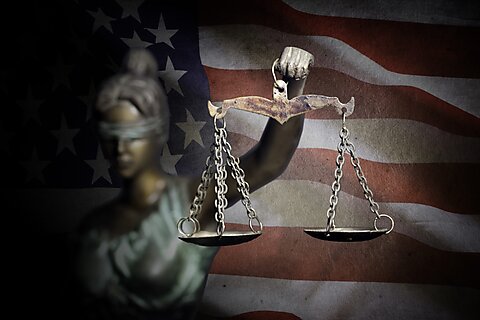
Matthew Cavedon
I had the privilege of spending several days last week at this year’s National Catholic Conference on Restorative Justice. The experience left me inspired and motivated to seek further dialogue between its supporters and libertarians.
Restorative justice can be defined as “a voluntary and safe process that brings together people affected by harm.” Its twin goals are for criminal offenders to acknowledge and take responsibility for the harm they have caused and for those affected by crimes to receive healing. What this means in practice varies widely. In some cases, restorative justice involves diverting cases away from jails and courts to see if they can be resolved through dialogue. For other cases, restorative justice can supplement formal criminal proceedings—for example, an offender might be sentenced to attend panels of crime survivors as part of a sentence. Sometimes, restorative justice can take place entirely on its own. One conference participant described meeting her sister’s murderer decades into his imprisonment, at which point he expressed his deep remorse, and she extended her forgiveness.
There are obvious ways that restorative justice aligns with libertarianism. Libertarians want alternatives to excessive “criminalization”—the overuse of government to investigate, prosecute, and punish undesirable behavior. Restorative justice can be a way of addressing wrongdoing that does not rely on coercive plea bargaining and lengthy incarceration. Libertarians also see interpersonal crime as more than a problem for public management—it is a rights violation, and those most directly affected by it should be taken seriously in deciding what responses are appropriate. Restorative justice points toward interpersonal interaction, rather than the mere doling out of consequences by prosecutors and judges. It promises to recenter communities in doing the work of repairing rifts, harkening back to practices from before the rise of modern bureaucratic governments.
Reinforcement of libertarian desires for reform is not all that restorative justice offers. It also reflects deep moral convictions that pose a noble challenge to libertarians. Any student of political philosophy knows there are “thick” and “thin” versions of ideologies—some people arrive at their politics through strong ethical commitments, such as the “non-aggression principle.” Others are more pragmatic and eclectic. The same is true of restorative justice, but in the religiously based conference I attended, several “thick” themes were emphasized that could push libertarian thinking in new directions:
Personalism. The first question I heard posed at the conference, and the first one raised in restorative justice practices, is “What’s your name?” The people I met take each person as having inviolable dignity and precious worth. Unlike the criminal legal system, which often considers certain people to be “beyond saving” or “incapable of change,” restorative justice holds to a justice that includes everyone—offenders, victims, survivors, and community members alike.
Prayers were always offered, by name, for both individuals on death row and the people they had harmed. The wrongs offenders committed are problems in need of redress, but as Catholic Archbishop of Miami Thomas Wenski has put it, “No man is a problem. No man is a problem. Any anthropology that would reduce the human person to being just a problem is simply a defective, an erroneous anthropology, unworthy of man created in the image and likeness of God.”
Treating people as disposable problems also impoverishes the idea of the common good, often cited to justify harsh punishment. As Russian Catholic philosopher Vladimir Soloviëv noted in arguing against the death penalty, how can a good, in fact, be common to all of society if it excludes one of its members—the offender?
Reconciliation. The criminal legal system sometimes considers its work done if an offender is no longer a threat to others. Restorative justice seeks more, a transformation in the relationships broken by a crime. One conference speaker put it beautifully: “When the landing space is secured, justice ends in hope, not death.” Death, whether through a sentence of death by execution or one of imprisonment until death, is not a victory. Restorative justice aims to restore the humanity that the offender has pushed away through guilt and that which the victims and survivors have pushed away through anger.
One conference attendee described a meeting between a murderer and his victim’s surviving relatives. The younger sister arrived with no desire to take part and spent much of the meeting with her eyes fixed on the floor. But when the family played videos of their deceased loved one, the offender began to weep uncontrollably. The sister reached into her purse, pulled out tissues, and offered them to the man. Both people’s humanity was restored.
Truth. This principle was particularly challenging to me as a former criminal defense attorney. Contrary to what many people assume, most of us are not intentional liars, but we do spend a lot of our jobs trying to get evidence excluded and confessions suppressed and warning people not to talk. There are indeed times when letting the truth show its full power in a court case threatens the rule of law. However, restorative justice is right to identify this as a real cost. It offers ways to defend the humanity of accused people by accepting, rather than avoiding, the truth. It holds out the possibility for accused people to see accountability as a virtue, not just a threat. It does so by holding out the possibility of redemption, not just punishment.
That final point merits further reflection: one of the costs of responding to crimes with harsh punishments is the incentive for people to hide the truth—from themselves, victims and survivors, and fellow community members. Pushing toward a system with more proportionality, saner consequences, and the invitation to reintegrate is not being “soft on crime.” It’s making room for the hard work of offenders coming to terms with what they’ve done.
***
Restorative justice and religious perspectives on it may not be familiar to many libertarians, but shared senses of human dignity and the value of freedom provide a starting point for connection. After all, as the Catholic author Flannery O’Connor wrote, “Everything that rises must converge.”








